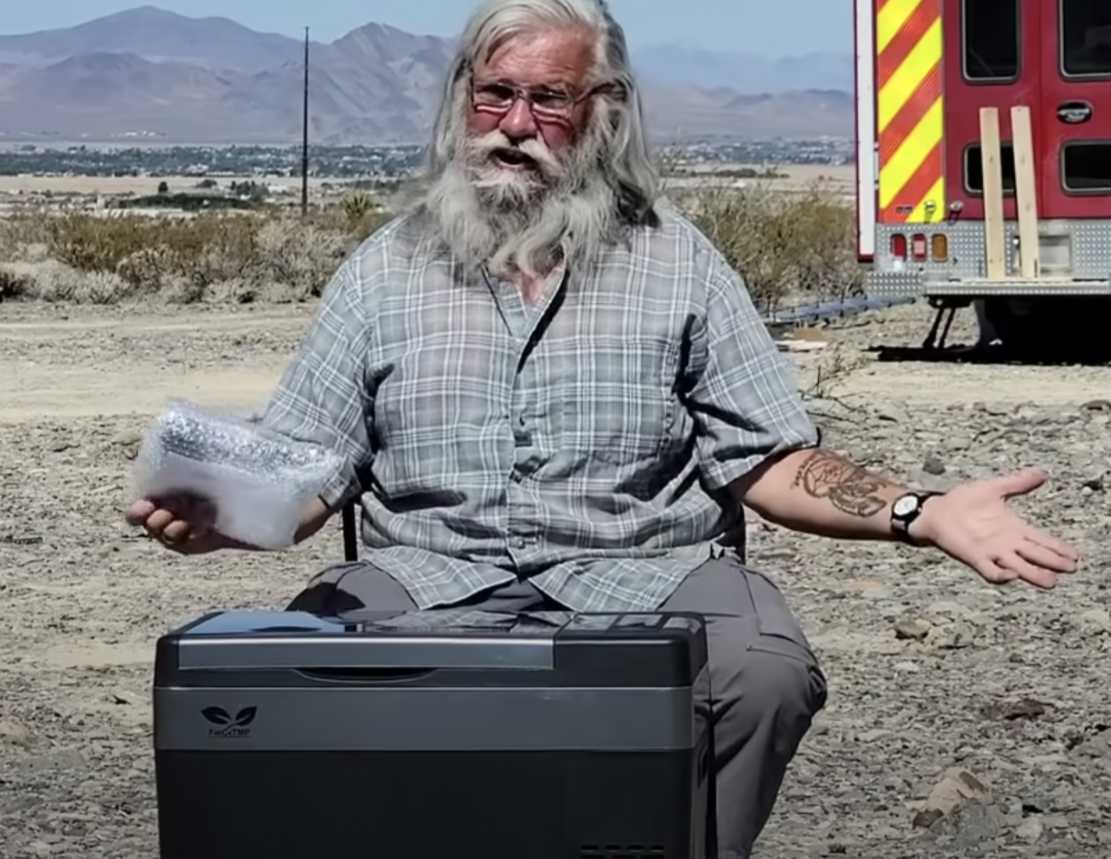
This is a F40C4TMP 30-quart compressor refrigerator. Let me explain the odd name. F40 is for Fahrenheit 40 degrees, C4 is Celsius 4 degrees, and TMP is temperature. Some names are just too cute. But I have reasons to believe this is a pretty good nomad life fridge for the price.
The specifications
The F40C4TMP can run on either 12V DC or 110V AC and has two cooling modes: Max for rapid cooling (which uses 45W), and Eco (which uses 36W) for saving energy. It can cool down from 77°F/25°C to freezing in about 15 minutes.
It has selectable 3-level battery protection that turns off the fridge when your battery level gets too low, then turns the fridge back on when adequate power returns.
The noise level of this refrigerator is 45 dB, which is like the background noise of a quiet office, falling rain or a typical household fridge.
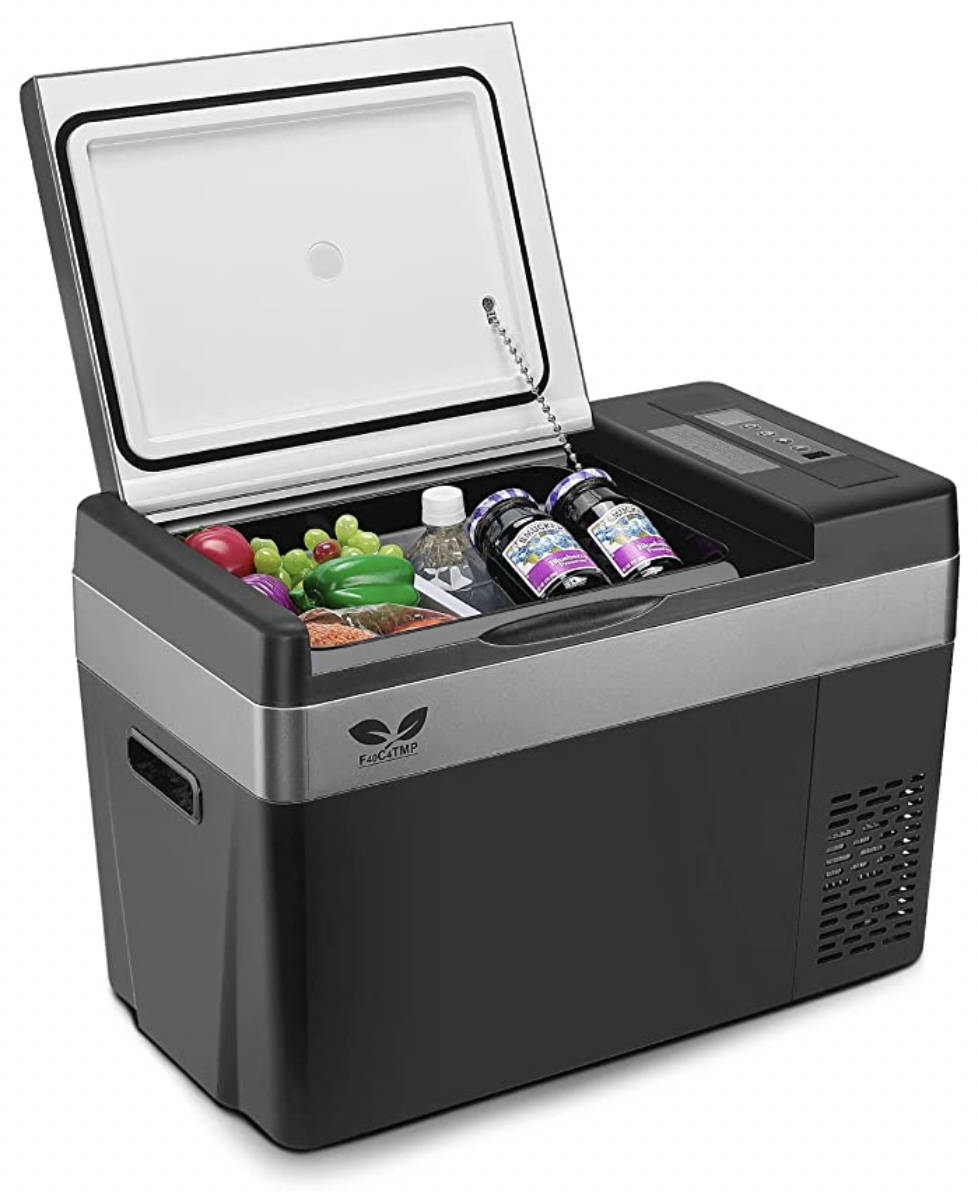
Choosing two smaller fridges rather than one large one
I’ve been buying 55-, 60-quart fridges That usually cost me five to six hundred dollars. For that price I can buy two of these. And that’s what I’ve done, because now that I have an ambulance I have a lot more room.
There are a couple of benefits with two refrigerators. The first is that it provides redundancy. If one of them fails I still have another. The second is that I can use one as a fridge and the other as a freezer. These can cool down to -7.6°F/-22°C.
Two fridges isn’t a solution for everybody, but it’s going to work really well for me. It may be a solution for some of you. Nomad living is a big tent. Some of you have big vehicles and you can have two smaller fridges. Some of you can’t, you only have to have one larger fridge. We’re all different, there’s no right or wrong out here. It’s whatever works for you.
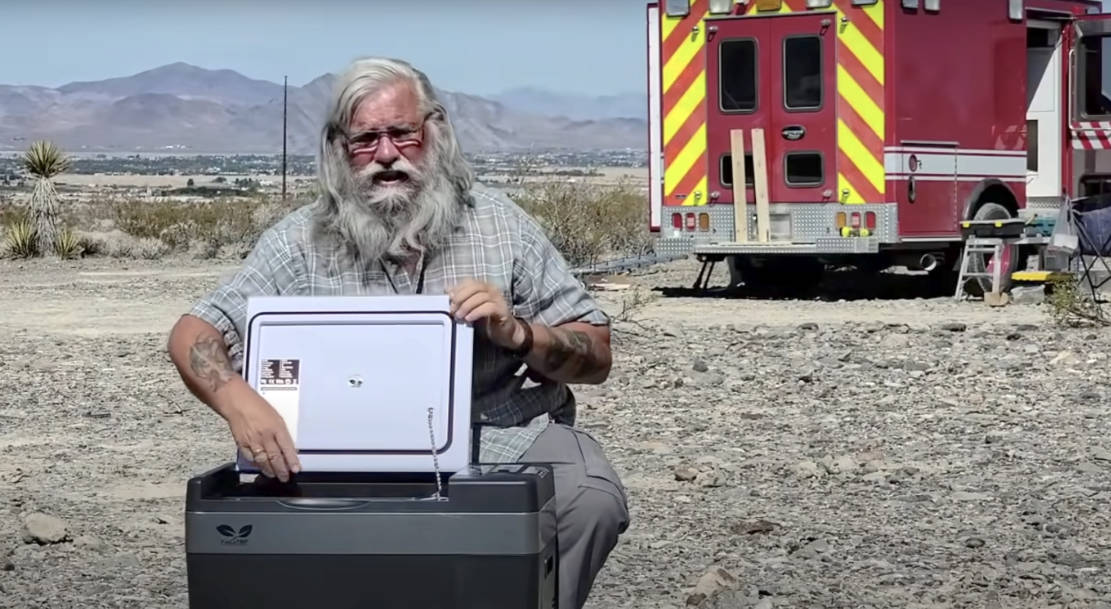
To give you an idea whether two—or even one—of these fridges will fit in your rig, the external dimensions of the F40C4TMP are about 22.6 by 12.6 by 15.5 inches (57.4 x 32 x 39 cm). And since this fridge has inset handles it takes up less space. The internal dimensions are approximately 14 x 10 x 12 inches (35.5 x 25.4 x 30.4 cm).
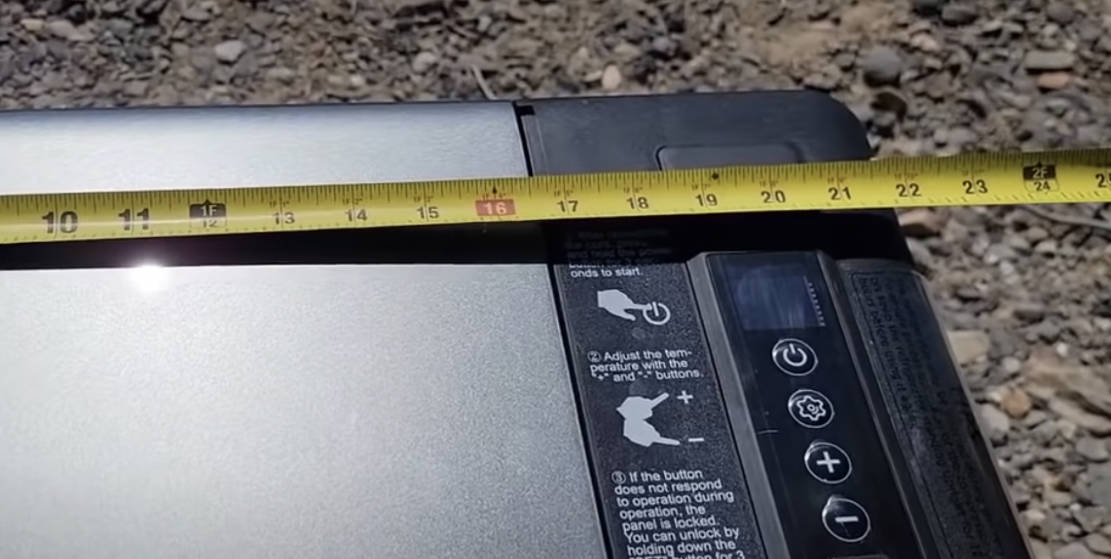
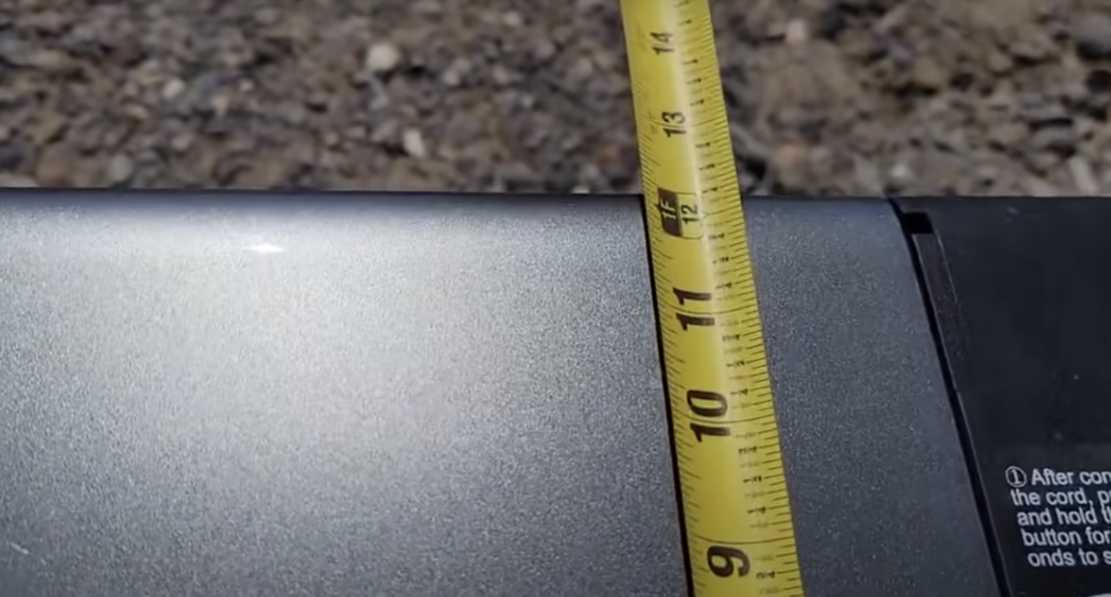
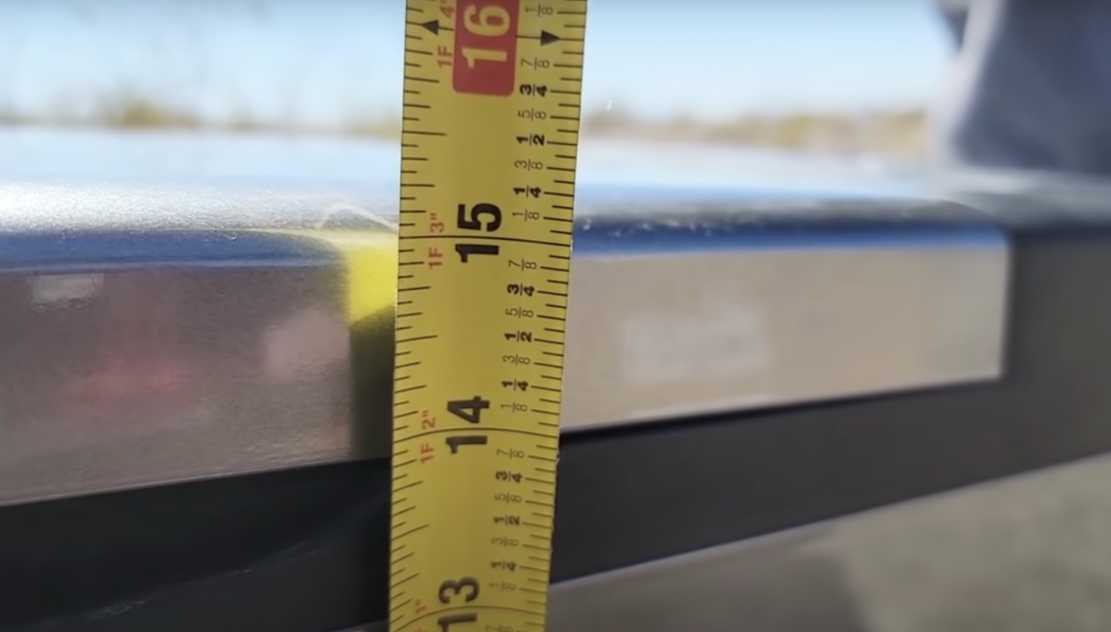
My large refrigerators held a lot of stuff, but that meant digging through that stuff—or removing it—to get what’s at the bottom. I hated that. There’s less digging with smaller fridges. That might not be important to you, but after living with large refrigerators it important to me.
Even if you have only one of these refrigerators, you’d still have a more than adequate fridge for much less than the big name brands.
Some other things
The compressors in refrigerators create a little heat, because compressing gases and liquids raises their temperature. That heat needs to escape to keep the compressor from eventually failing. So you need to locate the fridge where air can flow in and out of its vents.
Also, if the fridge has been tipped on its side or upside down during shipping or unpacking, let it sit upright for about a day before turning it on in order to let the coolant flow back to its proper place.
Conclusions
I’ve been using the 30-quart F40C4TMP for over a year now, and it’s still going strong. I’ve never lost any food from overfreezing or underchilling.
There are occasionally price drops on the F40C4TMP on Amazon. So if you have time to wait, you might add it to your wish list and track the price.

Leaving it upright for a day, let’s the oil in the motor settle back where it came from. The freon used in it is in a gaseous form until compressed by the compressor and pushed through the condenser where it turns to a liquid then it flows to the evaporator as a liquid and turns back into a vapor. If it has been running for a while and turned off or low power turns it off. It pays to let it sit till all the liquid freon has turned back into a vapor so it’s easier for the compressor to restart.
As far as using one full time it will do the job. Bob is right that it does need clearance for the heat created by the freon to leave the unit. For van or car it’s a good unit. If it’s too small the larger type units that are in rv’s now can use the same system of a 12 volt or a 120 volt compressor. Electricity is easy to make, propane type fridges would cost quite a lot to run as propane gets higher. And the higher the elevation the less efficient the propane fridge gets, but the compressor type rv fridge does not have that issue. It’s cold at any elevation.
Yes I pull a large 5th wheel. When they brought the newer style rv fridge with a compressor I bought one right away. Even tho my propane fridge worked. I replaced it because I’m set up for boondocking.. that gave me the opportunity to save propane to use for cooking only. These new style larger fridges for RV’s will fit almost perfectly where the propane type is. And cost of 1800 for a propane type versus 1200 for a compressor type. These two door types of compressor type fridges fit the boondocking lifestyle so easily. Keeping food colder than a propane type and totally frost free as well.
Glad Bob had this on the page. From the smaller cooler type to the larger two door type fridges, it makes life easier. From the smallest car to the larger rv’s, tech has come a long ways. And I’m sure it will go much farther as time goes by. Look at how folks have found ways to make life easier because of necessity. Sharing what we learn the hard way can help everyone.
Many might remember me for my time as camp host on BLM, where the gatherings began in sadden wash. 26 years on BLM in the Quartzsite. I’ve seen so many folks try something and then fail or the opposite, success, using banks of batteries, windmills, solar panels generators. Even tho most of those folks had big rv’s, there was plenty of other examples of folks using tents, cars, truck campers or shells , to vans and bigger busses.
What about service repairs or is it junk and replace?
Could you tell me how you power your compressor refrigerator for boondocking? We have been considering going to a compressor refrigerator. Our three way refrigerator will not cool properly when outside temp is above 80 degrees. Thanks.
I can’t speak for others, but I run my 24-quart compressor fridge with 200Ah of lead-acid batteries. My voltage seldom gets below 12.7V. I’m also able to run my lights, a fan, and charge my electronics.
Hi. I’m in a situation where I really need some advice. I was looking for an affordable (for me) van but couldn’t find one. Then some major life changes so I just bought a Hyundai Tucson(2006). I’m going to drive to California where I have a place I can stay, sell the Tucson and buy a used van. But in the meantime I’ll be driving from Virginia. I’m diabetic and need to keep insulin in fridge. This unit looks good and then I could transfer to van later. Is this kind that can plug into car lighter or does it need more? Second question:
Is there one that plugs into car lighter plug? I’m just going to power thru and get to Bay Area as fast as I can. Sleeping at rest stops etc. I’m 72 so may not be as fast as some people, maybe five or six days.Thank you for any answers.
Yes, you can run it via a car’s lighter plug, but there’s a risk of running down your battery. The fridge shuts off at one of three low voltage levels (you select which one), but it’s hard to say whether that would leave you with enough power to start your car, or whether the fridge would stay cool enough for your insulin while it’s off. It might be safer using a cooler for your insulin. Draining the water and replacing the ice is kind of a pain, but at least it leaves your battery alone.
Always aware of electrical usage building my system as budget allows, this unit’s low use is attractive. I wonder about the safety shut off being based on voltage that changes very little with the (lithium) LiFePO4 battery. Likely not an issue with lager (amps) capacity especially if the compressor doesn’t run all the time. Seems like 100 watt solar panel would more than balance one such freezer refrigerator unit.
I have a tesla power wall. I experimented once to see how long it would last, I went 18 days even using my ac and when it finally shut itself off, my fridge has basically the same system and shut itself off too. It did come back on as I threw the breakers from the panels back on. On solar it took 4 days for the battery to get back to full.
I have similar units and they are remarkable. Last Thanksgiving I purchased and 81 Qt on Amazon at an amazing price. Just keep your eyes open as they put special discounts on the all the time. We used this for 4 weeks boondocking all over New Mexico and Southern Arizona. It was plugged into my cigarette lighter in my truck. I had it set to cut off as 12.2 volts or the highest setting and never once say it cutoff. Just remember to leave ventilation by the compressor. I recent purchased 2 more 60 qt units that I will mount in my motorhome. One as freezer and one as Fridge. I am adding an additional 2 inches of foam and a 12 v fan on a temp sensor to keep them ventilated. Best of luck to you all, Cheers!